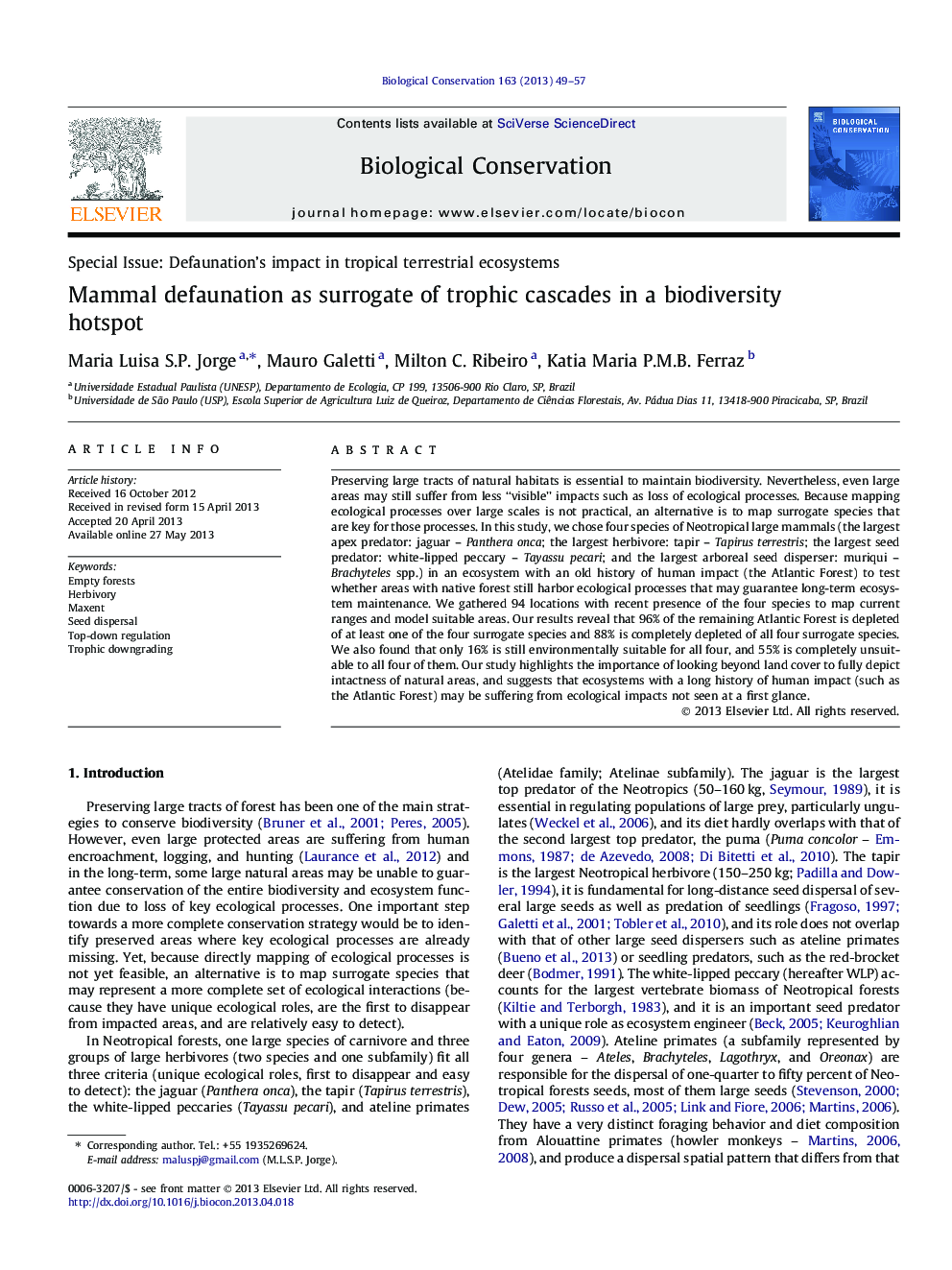| کد مقاله | کد نشریه | سال انتشار | مقاله انگلیسی | نسخه تمام متن |
|---|---|---|---|---|
| 4385058 | 1617938 | 2013 | 9 صفحه PDF | دانلود رایگان |

• Species with unique ecological roles may be used as surrogates of intact ecosystem functioning.
• We used jaguar, tapir, white-lipped peccary and muriqui as surrogates of intact ecosystem functioning in the remaining Atlantic Forest.
• We found that 88% of the remaining Atlantic Forest is depleted of all four species and 96% is depleted of at least one of them.
• We also found that only 16% is still environmentally suitable for all four species and 55% is unsuitable to all of them.
• Our results suggest that ecosystems with long history of human impact may be suffering from ecological degradation not seen at first glance.
Preserving large tracts of natural habitats is essential to maintain biodiversity. Nevertheless, even large areas may still suffer from less “visible” impacts such as loss of ecological processes. Because mapping ecological processes over large scales is not practical, an alternative is to map surrogate species that are key for those processes. In this study, we chose four species of Neotropical large mammals (the largest apex predator: jaguar – Panthera onca; the largest herbivore: tapir – Tapirus terrestris; the largest seed predator: white-lipped peccary – Tayassu pecari; and the largest arboreal seed disperser: muriqui – Brachyteles spp.) in an ecosystem with an old history of human impact (the Atlantic Forest) to test whether areas with native forest still harbor ecological processes that may guarantee long-term ecosystem maintenance. We gathered 94 locations with recent presence of the four species to map current ranges and model suitable areas. Our results reveal that 96% of the remaining Atlantic Forest is depleted of at least one of the four surrogate species and 88% is completely depleted of all four surrogate species. We also found that only 16% is still environmentally suitable for all four, and 55% is completely unsuitable to all four of them. Our study highlights the importance of looking beyond land cover to fully depict intactness of natural areas, and suggests that ecosystems with a long history of human impact (such as the Atlantic Forest) may be suffering from ecological impacts not seen at a first glance.
Journal: Biological Conservation - Volume 163, July 2013, Pages 49–57